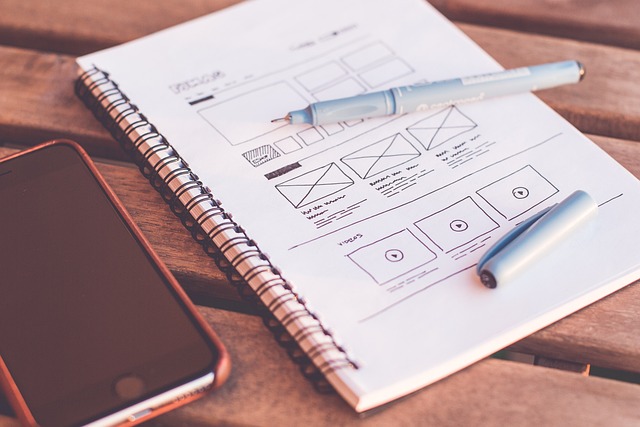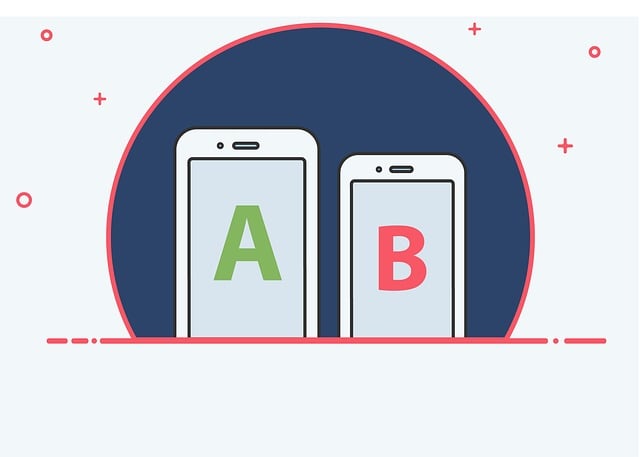Custom web design goes beyond functionality to create digital spaces that embody and amplify brands' unique identities. By aligning with core values, understanding target audiences, and incorporating visual aesthetics, designers craft visually compelling, user-friendly sites. This personalized approach involves moving beyond generic templates, offering flexibility for distinctive branding, innovative navigation, and interactive features tailored to individual brand needs. Such customization ensures websites stand out in a competitive online landscape, leaving lasting impressions on users and effectively conveying brand essence. Key benefits include enhanced SEO, increased organic traffic, improved user experience, higher conversion rates, and better business outcomes. Measuring success through metrics like conversion rates and qualitative feedback from users is vital for iterative design improvements. Future trends in custom web design focus on enhancing User Experience (UX), voice search optimization, AI-driven automation, sustainability, and cost-effectiveness.
Discover the power of custom web design and how it can transform your online presence. In today’s competitive digital landscape, a unique and tailored website is crucial for standing out. This comprehensive guide explores the entire process, from understanding custom web design and its ability to unlock distinct brand identities to implementing best practices for user engagement. Learn about the benefits, key elements, and future trends shaping this dynamic field, empowering you to create a compelling online experience with custom web design.
Understanding Custom Web Design: Unlocking Unique Brand Identity

Custom web design goes beyond the basics of creating a functional website. It’s about crafting an online presence that truly reflects and amplifies a brand’s unique identity. By understanding the core values, target audience, and visual aesthetics of a business, designers can build websites that not only attract but also engage and convert visitors.
This process involves breaking away from generic templates and standard themes, allowing for the creation of a visually compelling, user-friendly, and consistent digital experience. Custom web design offers the flexibility to incorporate distinctive branding elements, innovative navigation structures, and interactive features tailored to the specific needs and goals of the brand. This level of personalization ensures that a website stands out in a crowded online landscape, leaving a lasting impression on users and effectively communicating the brand’s essence.
The Benefits of a Customized Website for Your Business

A custom website design offers a multitude of benefits that can significantly enhance your business’s online presence and performance. Unlike templates or pre-made sites, tailored web designs are built from scratch to align perfectly with your brand identity, goals, and target audience. This level of customization ensures every element—from visuals and layout to functionality and user experience—works in harmony to convey your unique value proposition effectively.
Moreover, a customized website provides an opportunity for better search engine optimization (SEO). By incorporating specific keywords, optimizing page load speeds, and structuring content for readability, these sites can rank higher on search engines like Google, driving organic traffic to your business. The end result is increased visibility, more potential customers, and ultimately, greater revenue opportunities.
Key Elements of Effective Custom Web Design

A successful custom web design goes beyond aesthetics; it’s about crafting a user-centric experience that aligns with a brand’s identity and goals. Core elements like intuitive navigation, mobile responsiveness, and compelling visuals are non-negotiable. Intuitive navigation ensures users can effortlessly explore a website, finding information or services quickly. Mobile responsiveness is crucial in today’s mobile-first world, guaranteeing a seamless experience across all devices. Compelling visuals, including high-quality images and engaging videos, capture attention and convey brand messaging effectively.
Moreover, effective custom web design incorporates clear calls to action (CTAs), compelling content, and optimized loading speeds. CTAs guide users towards desired actions, be it subscribing to a newsletter or making a purchase. Compelling content, tailored to the target audience, builds trust and encourages engagement. Fast loading times enhance user experience, reducing bounce rates and boosting search engine rankings. These elements collectively contribute to not just a visually appealing website but also one that drives conversions and fosters long-term relationships with users.
Choosing the Right Web Design Platform for Customization

When embarking on a journey toward creative custom website design, selecting the appropriate web design platform is a pivotal step. This choice significantly influences the level of customization achievable and overall user experience. For businesses seeking a unique digital presence, platforms that offer flexibility and extensive design tools are paramount. Tools like drag-and-drop editors, responsive design features, and CSS customization options empower designers to translate their vision into reality without coding constraints.
Considered among the best options for custom web design, platforms with robust communities and regular updates ensure accessibility, security, and ongoing aesthetic advancements. These platforms allow users to tailor every element of their website—from layouts and color schemes to interactive components—enabling them to stand out in a competitive online landscape.
Best Practices for Creating an Engaging User Experience

When crafting a custom web design, prioritizing user experience (UX) is paramount. Best practices involve ensuring intuitive navigation, where users can effortlessly explore and access content. A clean, uncluttered layout with clear call-to-action buttons significantly enhances usability, guiding visitors through the site seamlessly. Incorporating responsive design is another critical aspect; ensuring your website adapts beautifully across various devices and screen sizes, from desktops to smartphones, provides a consistent experience for all users.
Interactive elements, like animated transitions or video backgrounds, can add a unique touch to a custom web design, capturing users’ attention and fostering engagement. Remember, a site that loads quickly is also key to retaining visitors. Optimizing images, minifying code, and leveraging browser caching are effective strategies to streamline loading times. Additionally, keeping content concise, well-organized, and optimized for search engines (SEO) improves discoverability, making your website more accessible and engaging for the target audience.
Measuring Success: Evaluating the Impact of Custom Web Design

Measuring success is a critical aspect of evaluating the impact of custom web design. It involves assessing how well the designed website aligns with its intended goals and delivers an exceptional user experience. Key metrics such as increased conversion rates, reduced bounce rates, and improved engagement indicators demonstrate the effectiveness of custom web design in capturing and retaining users’ attention. By tracking these metrics, businesses can gauge whether their online presence is effectively transforming visitors into customers or clients.
Custom web design success also extends beyond numerical data. Qualitative feedback from users plays a significant role in understanding user satisfaction and preferences. Through surveys, reviews, and direct interactions, businesses gather insights that inform future design iterations. This iterative process ensures that the website remains relevant, appealing, and aligned with target audiences’ evolving needs and expectations. Ultimately, successful custom web design translates into enhanced brand perception, increased customer retention, and improved business outcomes.
Future Trends in Custom Website Development

The future of custom website development is ripe with exciting trends that promise to revolutionize the digital landscape. One prominent trend is the increasing emphasis on user experience (UX), where designers are focusing on creating intuitive, seamless interfaces that cater to users’ needs and preferences. With advancements in technology, voice search optimization is becoming paramount, as more people rely on virtual assistants for online queries. Therefore, custom web design will need to adapt by incorporating natural language processing and conversational UI elements.
Another notable trend is the integration of artificial intelligence (AI) and machine learning into website development. AI-powered tools can automate tasks like content creation, personalized recommendations, and visual design optimization, making custom web design more efficient and cost-effective. Additionally, as sustainability becomes a digital priority, eco-friendly practices in web design will gain traction, focusing on energy-efficient technologies and minimalistic aesthetics to reduce resource consumption.
